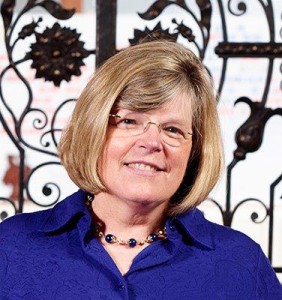 I began my publishing career in pre-computer days: manuscript was typed on a typewriter, and editing was done on hard copy. I took a freelance job from a publisher who required that I work in ink, and for that job I acquired a special fountain pen that I filled with green ink.
I began my publishing career in pre-computer days: manuscript was typed on a typewriter, and editing was done on hard copy. I took a freelance job from a publisher who required that I work in ink, and for that job I acquired a special fountain pen that I filled with green ink.
To change or remove an edit, I used ink eradicator, which came in a little brown bottle with a stopper that doubled as an applicator. The ink rule ensured that every edit was very deliberate; still, I probably used up that entire bottle of eradicator.
Computers have revolutionized not only the process of researching family history but also the writing and editing of it. I can’t even imagine how many green-ink marks I might have made on a hard-copy manuscript of a family history: making wavy lines under names to mark them for boldface; fixing numbering systems; abbreviating words in child text where necessary; styling hundreds if not thousands of footnotes. And how many times would I have leafed through all those pages, checking that a person’s name was spelled consistently on each mention, or that the person’s data matched in the child list and the main text – or that the note numbers matched the notes, and that all the numbers were there! The pages would have been curled, and my fingers full of paper cuts.
Writing on a typewriter was equally challenging. You couldn’t have made the type smaller for your child text. You couldn’t have set up a right-indent tab to line up your child numbers on periods. You couldn’t type in boldface or italics. Instead of italicizing, you underlined titles by backspacing and typing lines under the appropriate word. And the numbering: not only the people but the notes! You would have had to type your notes as a separate section, I think; does anyone remember how hard it was to estimate how much space to leave at the bottom of the page for footnotes, and to avoid having your paper fall out of the typewriter when all of a sudden you were at the bottom of the page? I haven’t even mentioned the difficulty of making a correction using a typewriter eraser, opaquing fluid, or correction tape.
It’s been fun remembering that pre-computer life – and imagining myself back in my little apartment in Cambridge, fountain pen in hand, counting the numbers in an ahnentafel – but it’s been even more fun to write this blog post using Microsoft Word.
On my laptop.
On my deck.
Share this:
About Penny Stratton
A veteran of the book publishing industry, Penny Stratton retired as NEHGS Publishing Director in June 2016; she continues to consult with the Society on publications projects. Among the more than 65 titles she managed at NEHGS are The Great Migration Directory, Elements of Genealogical Analysis, Genealogist’s Handbook for New England Research, and the award-winning Descendants of Judge John Lowell of Newburyport, Massachusetts. She has written for American Ancestors magazine and is a regular poster on Vita Brevis. With Henry B. Hoff, Penny is coauthor of Guide to Genealogical Writing: How to Write and Publish Your Family History; she is also the author of several Portable Genealogists on writing and publishing topics.View all posts by Penny Stratton →